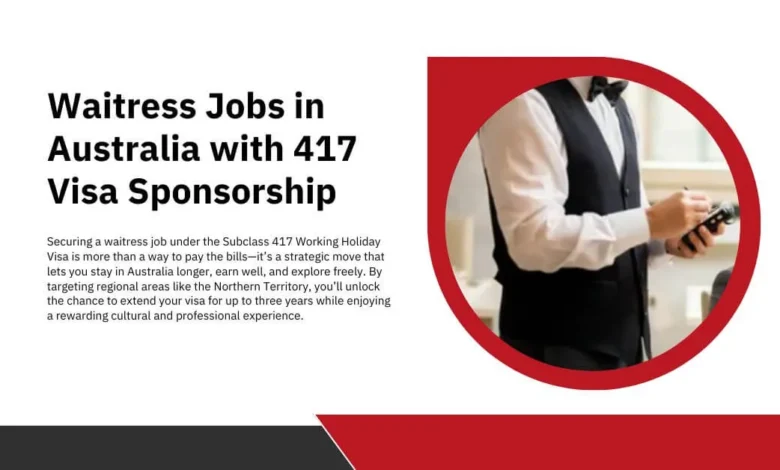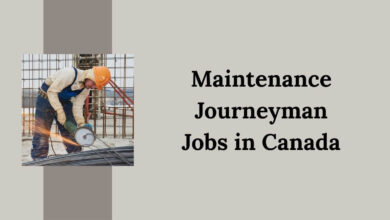Waitress Jobs in Australia with 417 Visa Sponsorship

Dream of funding your Australian adventure while exploring its iconic landscapes? The Subclass 417 Working Holiday Visa is your ticket, and a waitress job is one of the most popular and effective ways to make it happen. This isn’t just about pulling beers or serving coffee; it’s a strategic opportunity to legally extend your stay in Australia for up to three incredible years while earning a fantastic wage.
This guide breaks down exactly how you can use a hospitality role to unlock this dream. We’ll cover the lucrative pay rates (AUD $27+ per hour with penalty rates), the specific visa requirements you need to meet, and the crucial step of securing a job in a designated regional area to qualify for your second and third-year visas. If you’re ready to turn your people skills into a pathway for adventure, your journey starts here.
Understanding the Subclass 417 Working Holiday Visa for Waitress Jobs
The Subclass 417 Working Holiday Visa is a popular program that allows young adults to live, travel, and work in Australia for up to three years. For those in the hospitality industry, it provides a fantastic opportunity to gain international experience while funding their adventure.
Visa Structure & Pathways to Extension
A key feature of this visa is the ability to extend your stay by performing specific types of work in designated regional areas.
- First-Year Visa: Valid for 12 months from the date of entry.
- Second-Year Visa: To qualify, you must complete at least 88 days of specified work in a designated regional area during your first year.
- Third-Year Visa: To qualify, you must complete at least 6 months of specified work in a designated regional area during your second year.
Crucially for waitresses, work in the hospitality sector (including waiting tables) in a designated regional area counts toward the 88-day requirement for the second- and third-year visas. This makes waitress jobs a highly sought-after option for visa holders.
Key Requirements for Applicants
To be eligible for both the visa and a waitress position, you must meet the following criteria:
- Visa Eligibility:
- Be aged between 18 and 35 (inclusive) at the time of application.
- Hold a passport from an eligible partner country (e.g., UK, Canada, Germany, France, South Korea, Japan).
- Have sufficient funds to support your initial stay (approx. AUD $5,000).
- Meet health and character requirements.
- Job Requirements:
- Experience: At least 1–2 years of experience in hospitality, waitressing, or food service is highly preferred.
- English Skills: Proficient verbal communication skills in English are essential for interacting with customers and staff.
- Flexibility: Availability to work evenings, weekends, and holidays is often required.
- Documents: A valid passport, a well-prepared CV highlighting hospitality experience, and proof of your 417 visa eligibility.
Typical Waitress Job Duties
As a waitress in Australia, your responsibilities will include:
- Greeting customers, seating them, and presenting menus.
- Taking food and beverage orders accurately.
- Serving meals and drinks in a timely and professional manner.
- Processing customer payments and operating point-of-sale (POS) systems.
- Maintaining clean and sanitized tables and service areas.
- Assisting with restocking supplies and side duties.
- Providing excellent customer service to ensure a positive dining experience.
Benefits of a Waitress Job on a 417 Visa
- Visa Extension Pathway: This is the primary benefit. Working in a designated regional area (like Berrimah, NT) directly contributes to your eligibility for a second- or third-year visa.
- Competitive Pay: Earn a high hourly wage, often AUD $27–$28+, thanks to Australia’s high award wages and penalty rates for evenings, weekends, and public holidays.
- Career Development: Gain valuable international experience in a fast-paced industry, building skills that can lead to supervisory or management roles.
- Cultural Exchange: Work in a diverse, multicultural environment and improve your language skills.
- Exploration: The flexible, often casual nature of hospitality work allows you to earn money and then take time off to travel and explore Australia.
Visa Requirements
Before you can work as a waitress, you must first qualify for and be granted the Subclass 417 visa. The requirements are:
- Age: You must be between 18 and 35 years old (inclusive) at the time you apply.
- Nationality: You must hold a passport from an eligible partner country. This includes the UK, Canada, France, Germany, Ireland, Italy, the Netherlands, South Korea, Japan, and several others.
- Primary Purpose: Your main intention must be to holiday in Australia, with work being incidental to fund your trip.
- Financial Requirements: You must have sufficient funds to support yourself initially (generally advised to have at least AUD $5,000 in savings) and to buy a return or onward travel ticket at the end of your stay.
- Health & Character: You must meet health and character requirements. This may include providing a police certificate.
- Previous Visas: You must not have previously entered Australia on a Working Holiday visa (subclass 417) more than once. (This applies to the first visa; you can apply for a second and third later).
Why Consider the Northern Territory (NT)?
Regions like the Northern Territory (including Berrimah and Darwin) are excellent choices for 417 visa holders because:
- Designated Regional Area: Work performed here counts toward the 88-day requirement for your visa extension.
- High Demand: The growing hospitality sector has a constant need for staff in cafes, restaurants, and hotels.
- Lower Cost of Living: Compared to major cities like Sydney or Melbourne, living costs in the NT can be more manageable.
- Unique Adventure: It offers unparalleled access to iconic Australian outback experiences and natural wonders like Kakadu National Park and Litchfield National Park.
How to Apply for a Waitress Job
- Secure Your 417 Visa: Obtain your first-year visa before you arrive or while you are in Australia.
- Prepare Your CV:Tailor your resume to highlight all relevant hospitality and customer service experience.
- Search for Jobs: Use Australian job portals like Seek, Indeed, and Jora. Look for roles in designated regional areas.
- Apply Directly: Many pubs and restaurants advertise vacancies on their windows or social media pages. Don’t hesitate to walk in and ask.
- Interview: Be prepared for a quick interview, often on the spot or via a phone call.
- Start Working: Once hired, ensure you keep detailed records of your employment (payslips, a signed letter from your employer) to prove your eligible workdays for your visa extension application.
Conclusion
The Subclass 417 Working Holiday Visa presents a unique and powerful opportunity for young adults to experience life in Australia, and securing a waitress job is one of the most effective strategies to maximize this opportunity. It successfully combines the practical need to earn a high income with the strategic goal of qualifying for a second or even third year in the country.
The key to unlocking this pathway lies in targeting designated regional areas like the Northern Territory, where your work directly contributes to your visa extension requirements. The high demand for hospitality staff in these regions, coupled with Australia’s strong wage awards, makes this a financially rewarding and logistically feasible plan.
Frequently Asked Questions
-
How much can I realistically earn as a waitress in Australia?
Thanks to Australia’s high award wages and penalty rates, pay is very competitive. You can expect a base hourly rate of AUD $27 to $28 or more. This amount increases significantly for work done on evenings, weekends, and public holidays, meaning your actual take-home pay can be much higher.
-
have no experience. Can I still get a waitress job?
While experience is preferred, a positive attitude and willingness to learn can be enough for many entry-level positions, especially in high-turnover areas. Highlight any customer service or teamwork skills you have from other jobs on your CV.



